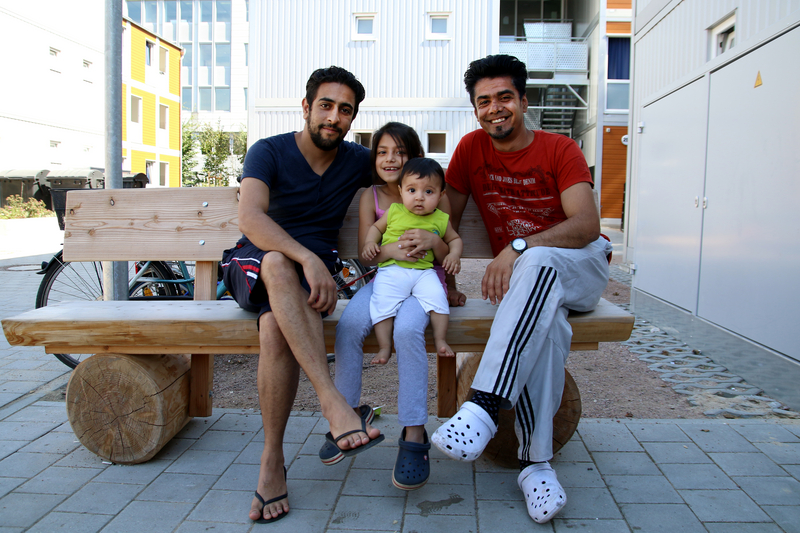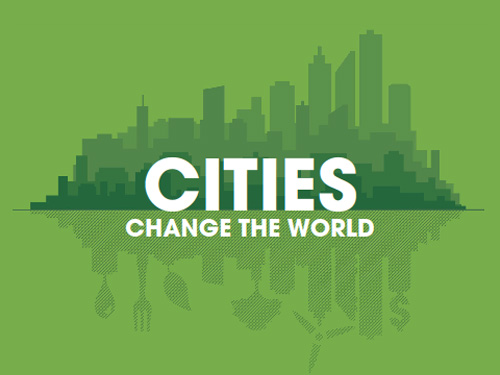Integrating migrants is part of the DNA of large cities. With rising political instability and the climate crisis, cities may have to deal with the need for a better social and economic integration of growing refugee inflows. The experiences of major German and Swedish cities show that there are several ways to respond to this intention in the short and long run.
La Fabrique de la Cité is an urban innovation think tank that has, for several years, been exploring urban resilience: the ability of cities to resist and adapt to acute shock and chronic stress. In 2017 we launched a study focusing on the responses of European cities to the large-scale inflow of asylum-seekers from 20151 onwards. Our attention was drawn in particular to German and Swedish cities: the former had to deal with the German federal government’s decision to host 890,000 people; and among the latter, Stockholm, whose public housing system was already experiencing a severe crisis, constitutes an interesting case study.
Hamburg, Munich and Stuttgart have in common a long tradition of welcoming migrants. This perhaps explains the way in which German cities have approached the challenge of emergency accommodation, then temporary housing: with the conviction that the new arrivals would stay in Germany, and with the commitment (particularly in Hamburg) that no asylum seeker would be left to sleep in the street. To face the challenge of emergency accommodation, German and Swedish cities have adopted two strategies. The first involves using non-residential buildings: Berlin used gymnasiums, schools, former factories, exhibition centres and hangars at the old Tempelhof airport, which at the height of the crisis sheltered over 2,500 people. In Stockholm, former classrooms or retirement homes no longer able to accommodate the elderly because of regulatory changes were used to host asylum-seekers. The second strategy involves constructing cheap, light, standardised structures on vacant land often belonging to the municipality.
The first type of longer term temporary housing, where asylum-seekers have sometimes stayed for more than 18 months, is a form of temporary accommodation that is not intended ever to be permanent: highly standardised and of variable capacity, it is characterised by its short lifespan. This is the solution implemented in Hamburg on the Notkestrasse site, where flexible housing units, built in barely 8 months on land belonging to the federal state, housed 648 asylum-seekers in February 2017. Special attention was paid to community life and preparing residents for integration: ethnic and religious communities between which there is potential for conflict were separated, families were housed on the ground floor so that they could keep an eye on their children playing outside, teams of social workers were present every day, etc.
Another approach involves offering temporary housing within a permanent structure, in other words buildings that will eventually be added to the city’s housing pool to accommodate other types of residents: students, the elderly, families, and so on. In Berlin, housing inspired by student halls of residence has been constructed, and will be used as social housing in the future.
Marie Baléo, Publishing manager, La Fabrique de la Cité
THE THINK TANK LA FABRIQUE DE LA CITÉ AND THE ISSUE OF AFFORDABLE HOUSING
For 10 years La Fabrique de la Cité has brought together researchers, decision-makers, elected officials, planners, architects, entrepreneurs and investors to lay down the principles of a shared vision for tomorrow’s city focusing on questions of mobility, the built environment, energy, digital technology and modes of use. We leverage collective intelligence in a multi-disciplinary and international perspective in order to suggest new ways of building and rebuilding cities. The study on the subject of affordable housing is part of this approach. For several months we met with experts in Paris, London, Berlin, Munich, Stockholm, Bordeaux and Warsaw in order to understand the sources of the housing crisis in these cities. These conversations formed the basis of a report highlighting the many facets of the crisis: complex relationships between mobility and housing in Munich, the limitations of increased urban density in inner Paris, the failure of the public housing system in Stockholm, etc. This work was made public at a seminar organised in collaboration with Bordeaux Métropole where we invited key figures involved in European housing to help us draft an outline for a target-driven, innovative and partner-based approach that cities must adopt in order to deal with this major metropolitan challenge.
Cécile Maisonneuve, President of the think tank

